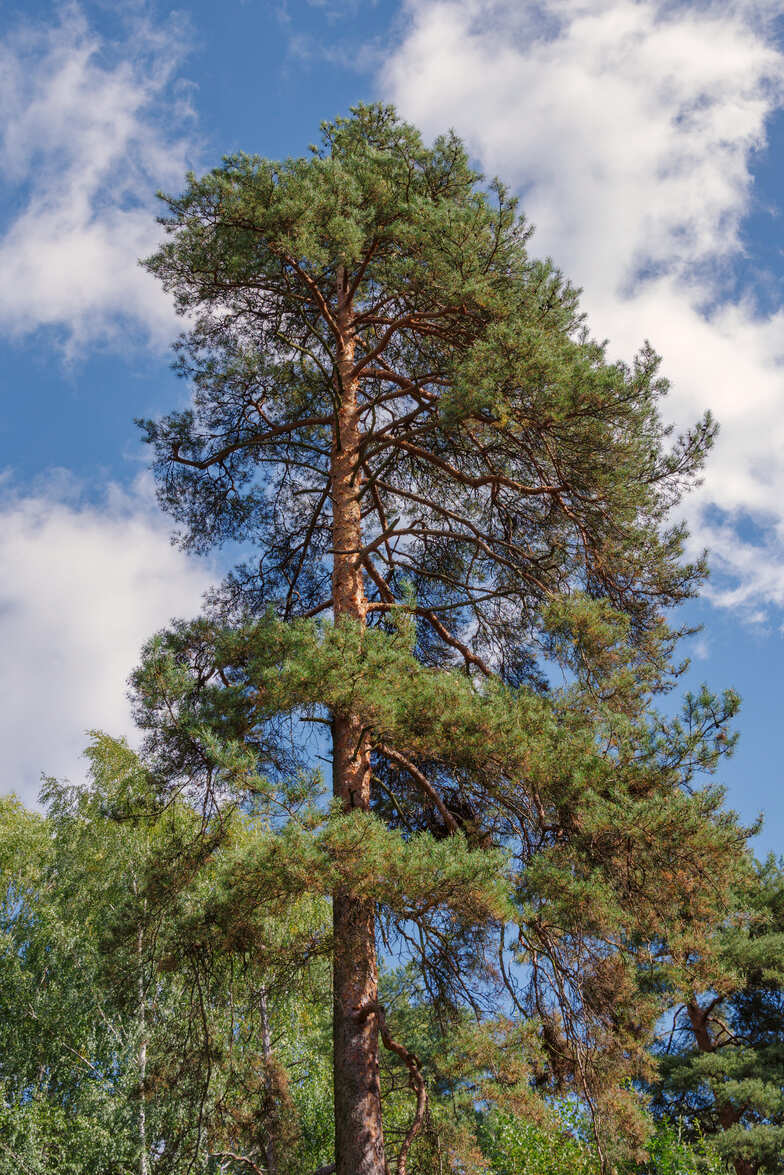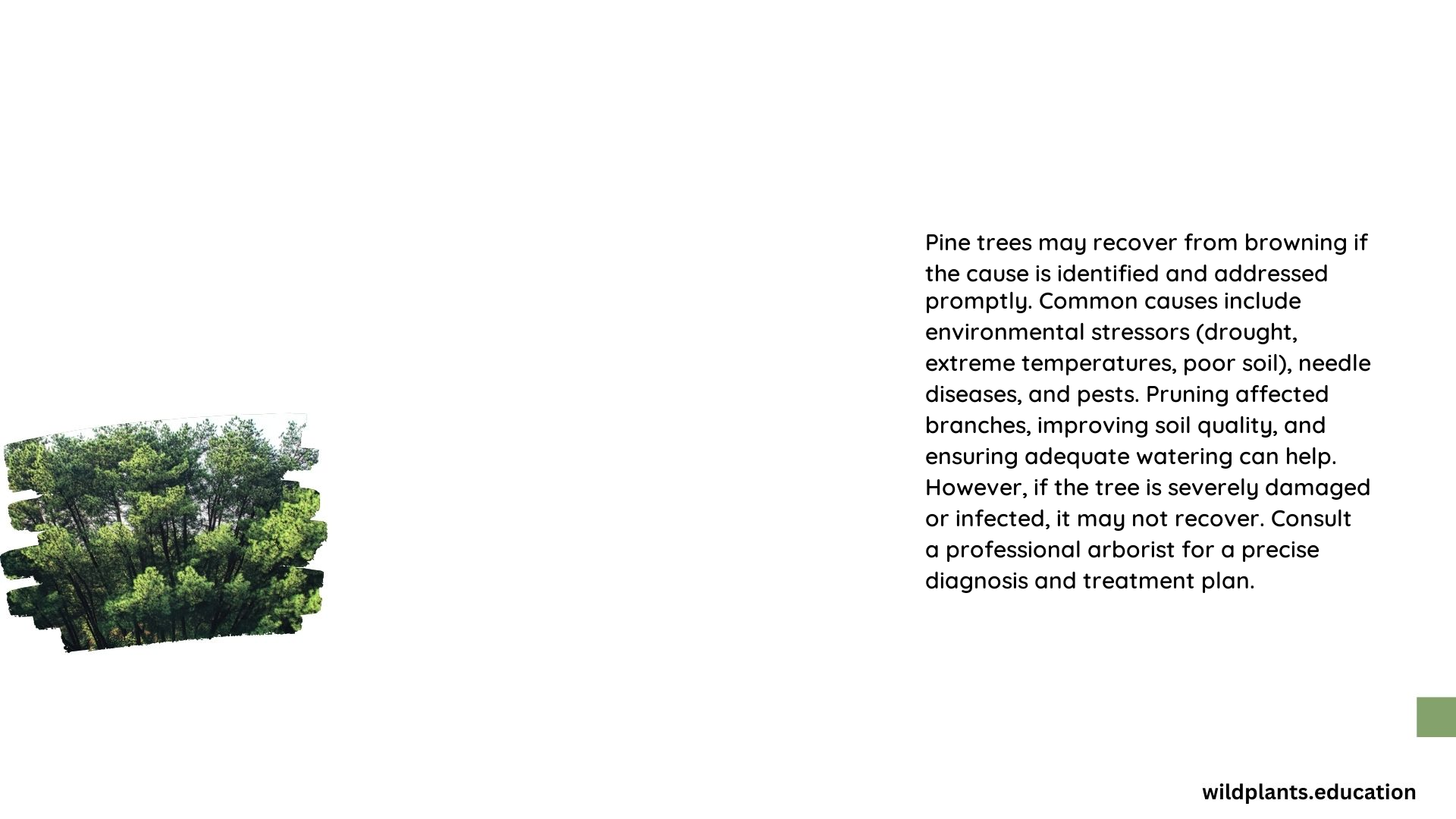Pine trees are susceptible to various diseases and environmental factors that can cause needle browning and impact their health and recovery. This comprehensive overview explores the recovery potential of pine trees after they turn brown, addressing the specified aspects.
What Diseases Can Affect Pine Tree Health and Recovery?

Pine tree diseases can significantly impact their health and recovery. Some common diseases include:
-
Annosus Root Rot: This fungal infection causes stunted needle growth and decay, known as “butt rot.” It typically affects pine plantations where thinning has occurred. Treatment involves applying borax powder to the surface of freshly cut tree stumps to prevent the spread of the disease.
-
Brown Spot Needle Blight: This disease causes circular gray-green spots on pine needles, leading to premature needle death and fall. Treatment involves forming a ridge of soil around the tree’s drip line with organic matter or cow manure, scattering ammonium sulfate and sulfur, and flooding the area with water.
-
Cotton Root Rot: This fungal infection can be treated by creating a barrier around the infected area using resistant grass crops, which prevents the spread of the fungus.
-
Diplodia Tip Blight: This disease affects the growing tips of pine trees, causing them to become brown and brittle. Treatment involves pruning affected branches and destroying all debris to prevent further infection.
-
Rust: This fungal disease causes yellow or orange pustules on pine needles, stems, and cones. Treatment involves removing alternate host plants, pruning and destroying affected branches, and applying fungicides during the early stages of infection.
How Does Winter Drying Affect Pine Trees?

Winter drying can significantly impact pine trees, particularly if they are exposed to cold temperatures and low moisture levels for an extended period. Key factors contributing to needle browning include:
- Duration of Exposure: Prolonged exposure to cold temperatures and low moisture levels can cause needle browning.
- Temperature Ranges: Temperatures below freezing can cause water within the needles to freeze, leading to damage and browning.
- Moisture Levels: Low moisture levels can cause the needles to dry out, leading to browning and death.
What Causes Needle Browning in Pine Trees?
Needle browning in pine trees can be caused by various factors, including:
- Causes: Drought, winter drying, fungal infections, and other environmental stressors can cause needle browning.
- Visual Indicators: Browning or yellowing of needles, premature needle drop, and thinning of the canopy are common visual indicators of needle browning.
- Recovery Strategies: Improving air circulation, pruning affected branches, and applying fungicides can help recover from needle browning.
Can Pine Trees Recover from Needle Diseases?
Pine trees can recover from needle diseases, but the recovery process depends on various factors:
- Recovery Timelines: Recovery timelines vary depending on the severity of the disease and the effectiveness of treatment. In some cases, recovery can occur within the same season.
- Environmental Conditions: Adequate moisture, proper air circulation, and suitable temperatures are necessary for recovery.
- Case Studies: Successful regrowth has been observed in pine trees treated with fungicides and provided with proper care.
Can New Growth Emerge on Dead Pine Tree Branches?
New growth can emerge on dead branches of pine trees under the right conditions:
- Factors Influencing New Growth: Factors such as pruning, soil quality, and moisture levels can influence new growth.
- Timeframes for New Growth Emergence: New growth can emerge within a few months to a year after pruning and proper care.
- Care and Interventions: Pruning dead branches, improving soil quality, and providing adequate moisture can enhance recovery.
In conclusion, the recovery potential of pine trees after they turn brown depends on the specific disease or environmental factor causing the browning, as well as the effectiveness of treatment and care. By understanding the causes and symptoms of various diseases and environmental stressors, and implementing proper care and interventions, pine trees can recover and thrive.
References:
1. Eden App. (2022, November 4). All about Pine Tree Diseases and How to Treat them. Retrieved from https://edenapp.com/blog/all-about-pine-tree-diseases-and-how-to-treat-them/
2. Caldwell Tree Care. How To Treat A Pine Tree Turning Brown. Retrieved from https://caldwelltreecare.com/how-to-treat-a-pine-tree-turning-brown/
3. 72tree. 5 Pine Tree Diseases and Treatments. Retrieved from https://www.72tree.com/5-pine-tree-diseases-and-treatments/.
